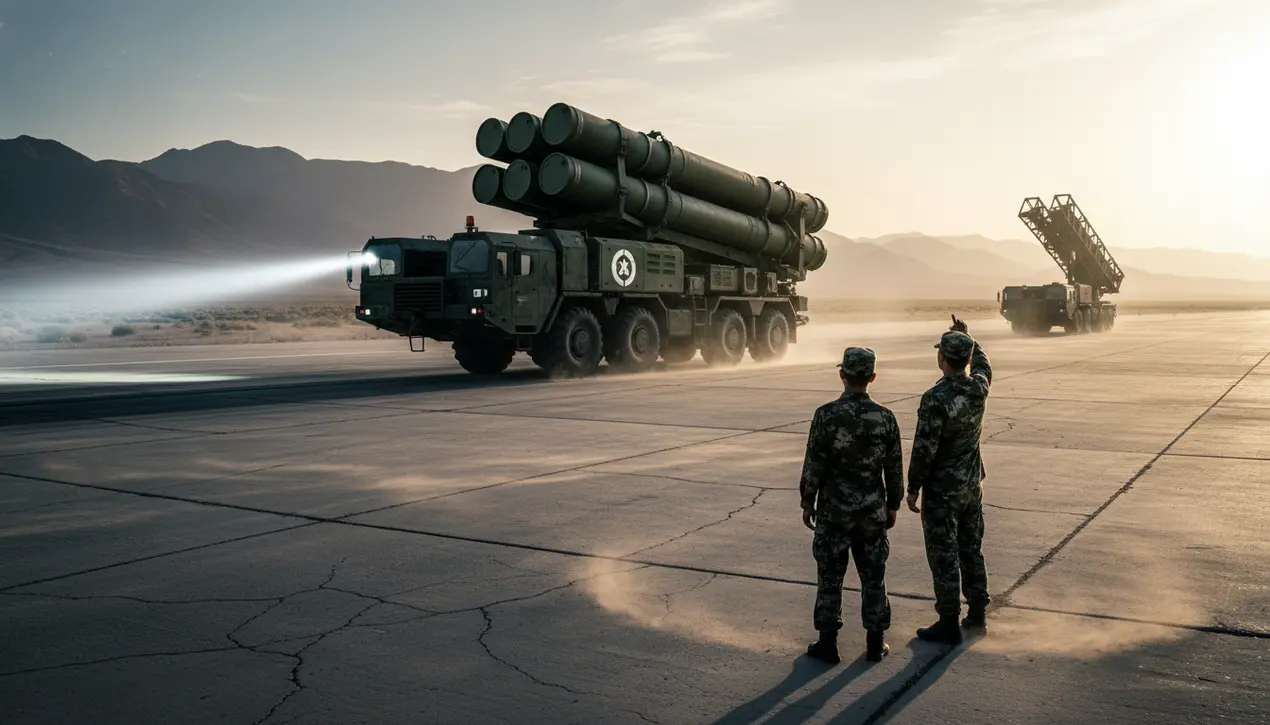
Politicsconflict & defenseArms Deals
China's HQ-29 missile interceptor compared to US rivals.
RO
Robert Hayes
2 hours ago7 min read
After a fifteen-year development cycle culminating in its public debut at September's Victory Day parade, China's HQ-29 missile interceptor has formally entered the strategic arena, a move that seasoned analysts are comparing to the chessboard maneuvers of the Cold War. This land-based system, also designated the Red Flag-29, is engineered to engage targets in the exo-atmospheric realm, effectively forming the topmost layer of Beijing's multilayered ballistic missile defense shield.The visual presentation of the system, mounted on a formidable six-axle launcher as detailed in publications like Ordnance Science, is not merely a display of engineering prowess but a calculated piece of strategic signaling. The geopolitical implications are profound, drawing immediate and inevitable comparisons to established American systems like the Terminal High Altitude Area Defense (THAAD) and the Ground-Based Interceptor.This development signals a definitive end to U. S.monopoly in this high-stakes domain, creating a new bipolar dynamic in strategic defense that echoes the nuclear parity of the last century. The HQ-29's capability to intercept warheads in the near-space region fundamentally alters the calculus of mutual assured destruction, potentially granting China a crucial advantage in the opening moments of any theoretical conflict by negating a portion of an adversary's second-strike capability.This technological leap did not occur in a vacuum; it is the fruit of persistent investment and reverse-engineering efforts, likely informed by decades of observing U. S.tests and deployments. From a historical perspective, this is reminiscent of the moment the Soviet Union demonstrated a comparable capability, forcing a recalibration of American nuclear strategy and leading to an arms race in defensive, rather than solely offensive, technologies.The question now facing Pentagon planners and allied governments across the Indo-Pacific is not merely about the HQ-29's technical specifications, but about the broader shift in the balance of power. Will this provoke a new wave of arms racing, with the U.S. compelled to develop even more advanced penetration aids or hypersonic weapons to overcome the new defense? Or could it, paradoxically, create a foundation for future arms control talks, as both superpowers recognize the destabilizing nature of an unconstrained defense-offense spiral? The system's deployment also has immediate regional consequences, potentially emboldening Beijing's posture regarding Taiwan and its territorial claims in the South China Sea, as it adds a significant layer of protection against potential retaliation. In the grand theater of global politics, the unveiling of the HQ-29 is less a singular event and more a pivotal act, one that historians may look back upon as the moment the strategic competition between Washington and Beijing entered its most mature and dangerous phase yet, a sobering parallel to the tense standoffs of the past that demands careful, analytic statesmanship to navigate.
#China
#missile defense
#HQ-29
#interceptor
#military technology
#featured
Stay Informed. Act Smarter.
Get weekly highlights, major headlines, and expert insights — then put your knowledge to work in our live prediction markets.
Comments
Loading comments...
© 2025 Outpoll Service LTD. All rights reserved.